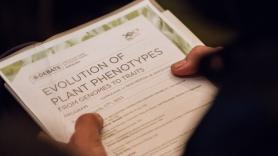2. How have the plants we eat changed?
Since the Neolithic era, humankind has selected the traits it most desired from each plant, thus guiding evolution in large part. Now, thanks to scientific research, there are many more precise improvement techniques, but for thousands of years these changes were carried out intuitively.
Studying these changes isn’t easy. For example, to study the variations in Arabidopsis —the first plant genome to be deciphered— Oliver Loudet, head of the INRA research group, and his team have collected varietals from America, Sicily and even isolated areas (and therefore non-domesticated plants) like Tajikistan, in Central Asia.
From there, they study how the plants behave under stress, for example due to lack of water, and observe how they resist and grow and look for scientific (and epigenetic) explanations.
Carlos Alonso-Blanco, of the Spanish National Center for Biotechnology, and his team do something similar in Madrid: studying varietals of the same plant and how they adapt to the seasons. In this search, they have found various regions associated with the flowering time, adaptation to high temperatures and even resistance to pollution.



